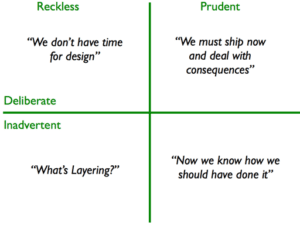There is a consensus among cloud experts that the onset of cloud computing will benefit small organisations the most. In fact, many even go as far as saying that the cloud and small businesses are a match made in IT heaven. How much of this is true and how much of this is merely part and parcel of the hype surrounding cloud computing?
The Cloud as the Great?Equaliser
If you closely examine the essential characteristics of cloud computing, particularly public cloud services, you will see why small organisations would be very interested in the cloud, and would eventually flock to it, like moths to a flame. And why not? Cloud computing is turning out to be the weapon that can allow small and medium organisations to compete on a more level playing field against large enterprises.
Here are some cloud computing benefits that may just close the gap between the two.
- Significantly lower IT spending. With little to no investment at all on hardware infrastructure and practically zero maintenance costs, SMBs that would have required substantial capital for IT are now finding it easy to get a business started from scratch or develop and test out new products by using the cloud as the backbone of their IT set-up. The pay-as-you-go pricing scheme that cloud computing offers allows companies to start small and scale up as needed, or when the revenue starts coming in.
- Higher employee productivity. Licensing fees for software applications can run high even if you don’t have a large staff. Good thing there are now a host of cloud-based office tools – word processors, spreadsheets, presentations, accounting systems, etc. – that can boost employee productivity without the corresponding costs that small businesses can ill afford. Plus, team members in remote locations can continue to collaborate with the rest through any internet-connected device in real time.
- Easier, better communication. The easy accessibility of communication apps has also changed the way employees interact with fellow employees and more importantly, with customers. Whether through email, instant messaging, or social networks, cloud services have given individuals and businesses more ways of giving and getting feedback. The best thing about it is that most of these services don’t cost much or are even free, giving SMBs ample tools to create better products and improve service.
- A Look at the Figures Many small businesses are already seeing the potential in the cloud, with SaaS (Software as a Service) applications most commonly used among the early adopters. These services include email and other communication apps, file sharing, and backup.
In a February 2012 Edge Strategies survey (commissioned by Microsoft) of 3,000 small businesses in the US, the following data came to light:
- The number of small companies with 2 to 10 employees using paid cloud services will triple in the next three years;
- Current cloud users report purchasing an average of 4 services in the cloud now and expect to use 6 in the future;
- Fifty percent agree that cloud computing is going to become more important for businesses such as theirs.
Further, a survey of 323 SMBs recently released by social business site Spiceworks and sponsored by EMC reveals that from 48 percent at the start of 2012 and 28 percent a year ago, 62 percent of the businesses surveyed now use some type of cloud app.
What these numbers show is that cloud adoption among small and medium enterprises is starting to gain ground and for sure, more will do the same as understanding and awareness increase. Yes, these businesses should still perform their due diligence as there is no one-size-fits-all cloud solution. But for those companies who have managed to find the right cloud apps and services for their needs, it’s all sunny skies up ahead.
Contact Us
- (+353)(0)1-443-3807 – IRL
- (+44)(0)20-7193-9751 – UK


